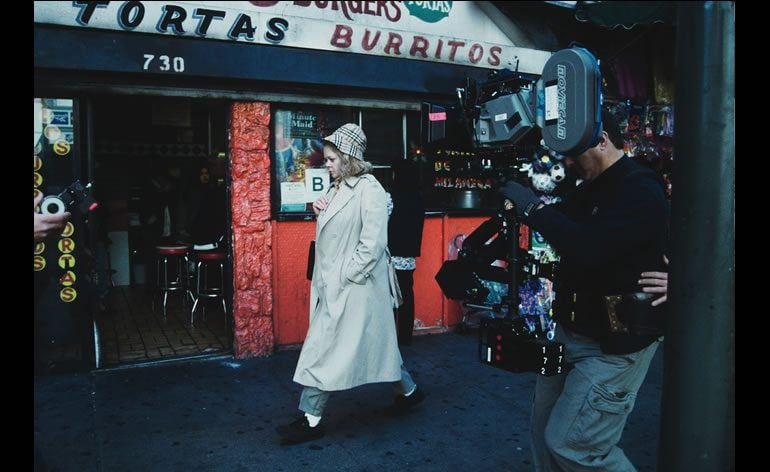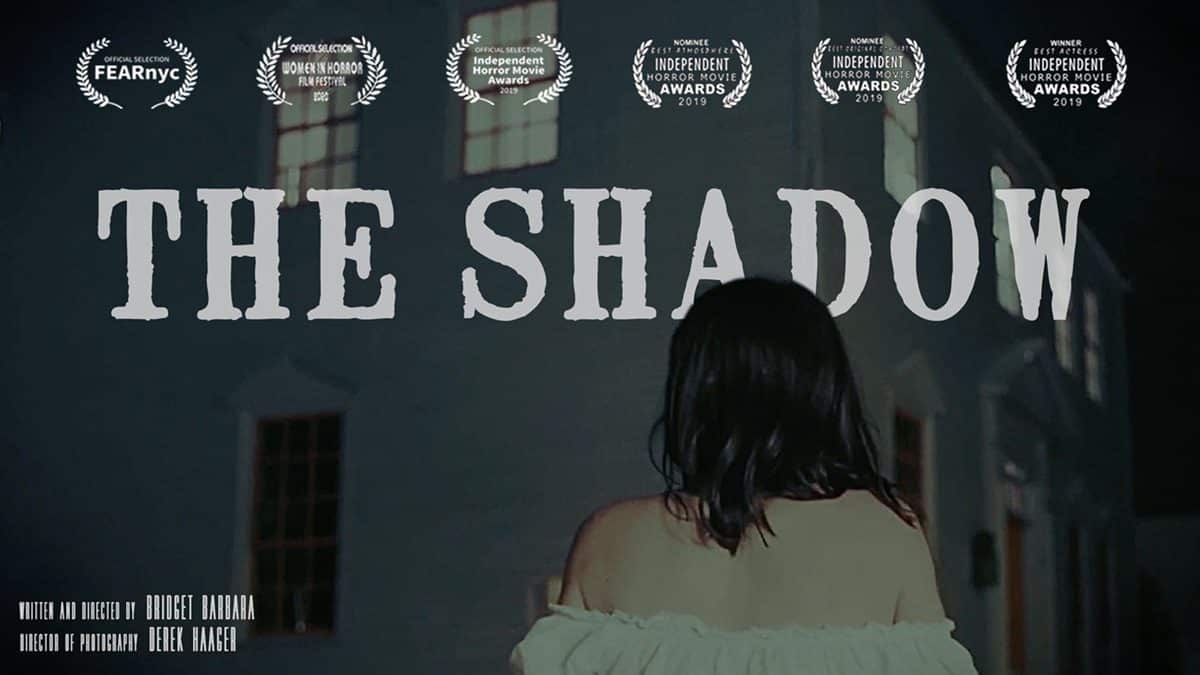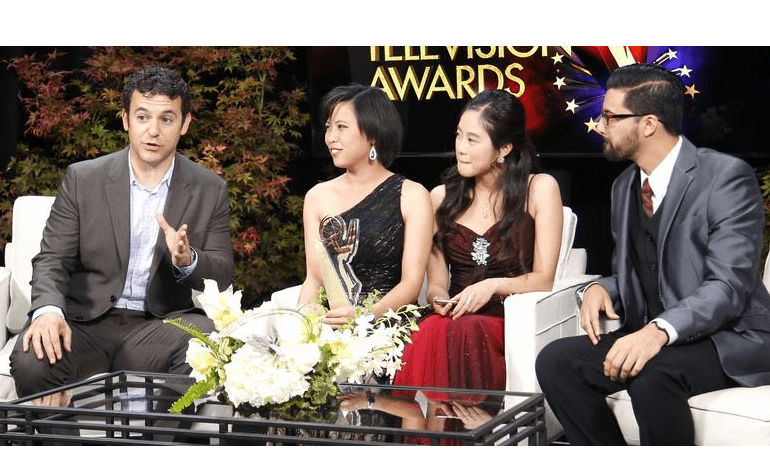Reference: StudentFilmmakers Magazine, June 2007. Dead End Job Wins Best Student Visionary Award at Tribeca: Something from the Heart and Not About Gimmicks by Jody Michelle Solis. Pages 22 – 26.
Written and directed by Samantha Davidson Green, the 21-minute short film, “Dead End Job,” wins the Tribeca 2006 Best Student Visionary Award. The dark, romantic comedy stars Kate Brickley and Lee Schall. Having completed her M.F.A. in Directing at UCLA, “Dead End Job” is Green’s M.F.A. thesis film.
A writer’s question first – how long did it take to write, “Dead End Job?”
Samantha: I spent about a year on the script. I think that the ideas were developing for much longer than that, but from the time I started writing the script to the time we went into production was a little over a year.
Could you tell us in your own words a little bit about the story?
Samantha: The story is about an obituary writer who has made her career a success because she has this knack for predicting when newsworthy people are gonna kick it. [Laughs] …She gets the last interview and gets some final insight on [the person’s] life. Our story really starts when she has an intuition and sees herself as next. And so it becomes a story where she’s trying to write her own obituary, and in the process of that, the narrative that she has
always been seeing about herself – the story she’s always sort of understood about her life starts to fall apart, and she ends up taking a chance on life that she never had the nerve to take before. I sort of call it my dark, romantic comedy. … It’s sort of an alternative way of finding love in the obituaries instead of finding love in the classifieds. [Laughs]
What inspired its beginnings?
Samantha: The characters, for me, started out as very different people. I began writing the story with some inspiration from time I spent working on a television station where I kind of knew all these eccentric characters who worked in the news. And there were people who were addicted to everything that’s new, and there were people who kind of did these safe jobs and never changed their jobs – you know, cubicle life in the office, characters who hold on
to what’s secure. Those are all these sort of secondary characters. The main character, for me, started as a young woman who was just starting her career and gets assigned to the obituary department. She met one of her subjects – an older woman, who gives her a new perspective on her own life. About half way through the writing process I realized that the story I was really trying to tell was of an older woman who has a confrontation with her own mortality. So those two characters of the old woman and the young woman kind of met in the middle, and it sort of became a mid-life crisis romance story.
I think the writing process entailed a combination of hours and days and weeks of staring at the screen, and then sometimes backing away from it and finding that ideas would sometimes percolate up at unexpected moments, you know, while driving in traffic in LA or in the shower. Sometimes I sort of had to back away from it for me to make realizations like the turning point in the story where it became an older woman’s story and became more about somebody looking back at her own life.
I think I relate to my main character because a lot of what I was exploring emotionally for myself was the way that we as artists, whether you’re a writer or filmmaker, you live a sort of vicarious existence because you’re watching other people and living through them. What happens when the camera turns back on us? Or the pen turns back, and you have to really face your own life and recognize the ways your own self-concept kind of holds you back, or you stay in a safe place rather than taking a risk. Sort of when you change from being the object to the subject of the story. So
that’s a little bit about it.
Could you tell us about your team and how you put your team together?
Samantha: My producer was a classmate of mine at UCLA. Maria Rosenblum. We had a previous work relationship and just really got along well and supported each other. My cinematographer was also a friend of mine who did a personal favor. He’s been out of film school for a while and has been working mostly as a professional camera assistant. He’s very talented, and he recruited a lot of his friends to come work for free on the project. They did a beautiful job. The production designer, actually, is also a character in the film. She’s another classmate of mine from UCLA. And we’ve worked on all of each other’s films.
Same with my assistant director. I produced his thesis film. So as a core team, we’re all people who – you know, I had done something on their film, and they were supporting me in return. Which I think is one of the most beautiful things about student films – just how it’s all a labor of love and mutual support. I don’t know if I’ll ever have quite that same kind of vibe on a set that we had with that core team. Same as my editor, I had produced her thesis film.
My composer was the only person who I didn’t know when I started the project, but she was a friend of a friend. We’ll definitely work together again. We developed a very strong collaboration.
What kind of specific qualities did you look for when you cast the actors? How did you cast the actors?
Samantha: I had a wonderful friend who helped as a casting director. Her name is Sandy Vago. We started on the standard route of posting in the trades in Los Angeles, and we conducted about three rounds of auditions. It was only about a month and a half of casting, but it felt like a long time because we did a lot of call backs, and I was really struggling to find my two leads. We found some great secondary characters through those panels, and then I
chose my male lead, Lee Schall. But I wasn’t quite finding the person who I felt was “Abigail Slay,” and of course the film is so personal, the story is her story entirely. And so I kept thinking about and dreaming about this woman who I had known up in San Francisco six years before when I was thinking about going to film school. I took an acting class in San Francisco, and she had been my teacher. I couldn’t get her out of my head, and then on one of the headshots I looked at, one of the young actresses had studied under her. I saw her name and decided to kind of take that as a sign from the universe. [Laughs] I called information up there, and she was listed. I called her home number, and I said, ‘I don’t know if you remember who I am, but I took a class from you years ago, and if you would, I would love for you to read for the part of the lead in my thesis film if you have any interest in coming down to LA.’ And my casting director was up in San Francisco for Christmas and took her video camera and taped a reading of it, and I knew instantly that, that’s who I wanted. So Kate [Brickley] came down from San Francisco and spent two weeks with us in LA. The main quality that I was looking for was some combination in my main character of someone who has professional confidence but had a lot of personal vulnerability. That, I felt, was really key, and I wanted to be able to see both of those things at the same time. I just found Kate, my lead, just so deeply empathetic. I don’t cast for a physical type. I’m adamant about that because every short film I’ve worked on, I’ve been surprised by the people I’ve ended up choosing because it’s something more in their soul that just connects to the character, and often they don’t end up looking like what I imagined. And that was somewhat true for Kate as well.
What did you use to shoot and edit the film?
Samantha: We shot on 35 mm film on a Panavision camera package, and we edited on Final Cut Pro and Pro Tools for audio.
… I have some effects at the beginning of my film, which we ended up doing in a very old fashion way, so it was a fraction of the cost. I was gonna try to do like a digital intermediary for these free trains of obituaries on the screen, and I looked at the pricing of it, and it was going to be thousands of dollars even with, you know, donations from post houses. So I went back to the drawing board and found a printing press that was willing to print on newsprint, and then I worked with my title shooter to shoot them animation style on a stand. And we cut them back in, and the whole thing cost me about $300. [Laughs] So sometimes going back to the basics can get you the effects that you want. [Laughs] Whereas the new technologies can be seductive because they can do so many powerful things, but you might not even need that. You may be able to accomplish what you want in simpler ways.
How long did it take to shoot and edit the film?
Samantha: We had 10 production days. We spent about 2 months of intensive pre-production before those 10 production days. And it was about a year in post production… So we spent about 6 months editing the picture, and then I spent about 3 months doing the sound design and music composition, and then another 2 to 3 months to finish shooting all the titles…
What’s the secret of getting into festivals like Tribeca and actually winning in festivals like Tribeca?
Samantha: [Laughs] I don’t know what the secret is. …Submitting early, I think, is important because if the festival staff like your film, they’ll keep it up on the board… And you want to get in early so they can circulate your film around to all the programmers, and you build some enthusiasm for it. I mean, that’s my impression from the outside.
I volunteered for one festival here in LA as a screener, and that partly helped me understand a little bit of the internal dynamics of the festivals. And then, I think, also part of it too is just trying to realize that there’s a certain element of chance of whether the person that looks at your film is going to connect to it. So just keep being persistent – just keep sending it out because your film will find a home or will find the right place.
This film has played in 8 festivals now, which is really great, I’m proud of that, but it’s not a lot… For every festival my film played in, it was rejected from at least four. [Laughs] Just try to not take rejections too personally and keep looking for the home.
But I think the real answer to your question goes back to your question much earlier about the inspiration for writing. It’s about trying to write something personal and fresh and being aware of not imitating other films even if they’re great films that won the invitation… Trying to find that really personal story. And generally, I think that festival programmers really respond to that. They’re looking for something that’s sincere and from the heart and not
about gimmicks. Some short films tend to rely on just being clever.
There are some films that are totally fun being clever, but just try to find that way to make your story personal and expressive of yourself.
About Samantha Davidson Green Writer/director Samantha Davidson Green’s 2003 short, “Couch Encounter” was nominated for Most Original Film at the UCLA Film Festival and screened at the Los Angeles Latino International
Film Festival, among others. Green has received numerous honors, including a Mary Pickford Award and a Hollywood Foreign Press Association Award. She earned her B.A. at Stanford and completed her M.F.A. in Directing at UCLA.
Jody Michelle Solis can be reached at
[email protected] .





